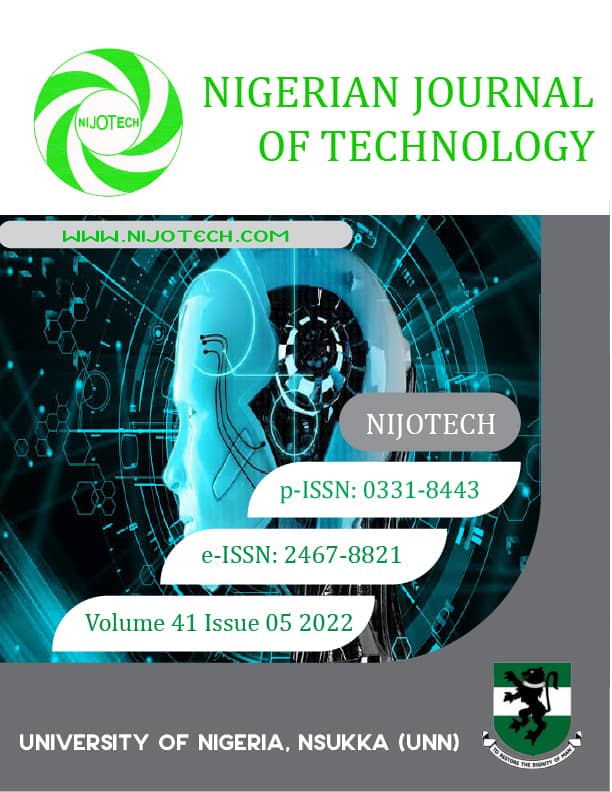WIDEBAND AND DUAL-BAND ANTENNAS WITH BAND-NOTCHED USING ELECTROMAGNETIC BAND-GAP STRUCTURE
WIDEBAND AND DUAL-BAND ANTENNAS
DOI:
https://doi.org/10.4314/njt.v41i5.9Keywords:
Antenna, Wideband, band-notch, EBG, bandwidth, VSWRAbstract
This paper presents a single-element microstrip spade-shaped patch antennas with a partial ground plane, integrated with an electromagnetic band-gap (EBG) structure, and fed with a microstrip feedline to achieve wide-band, dual-band and band-notched characteristics. Two similar mushroom-like EBGstructuresbuilt into the wide-band antenna were used to suppress a specific band, resulting in dual-band. The wide-band antenna achieved a broad bandwidth of 9GHz from 5-14GHz, with a maximum gain of 6.8dBi. Based on the simulation and measured results, the wide-band antenna offers 89% fractional bandwidth for a voltage standing wave ratio less than 2 (VSWR < 2). The EBG provides a band-notch with a bandwidth 3GHz from 8-11GHz, leaving dual-band with bandwidths of 2GHz and 1.5GHz centred at 7GHz and 11GHz, respectively. Surface current distribution and parametric studies were conducted to better understand the behaviour and influence of the EBG parameters. The simulation results were validated through experimental measurement, and both agreed well. The antennas could be used for 5G wireless communication and filtering.
Downloads
Published
Issue
Section
License
Copyright (c) 2022 Nigerian Journal of Technology

This work is licensed under a Creative Commons Attribution-NonCommercial 4.0 International License.
The contents of the articles are the sole opinion of the author(s) and not of NIJOTECH.
NIJOTECH allows open access for distribution of the published articles in any media so long as whole (not part) of articles are distributed.
A copyright and statement of originality documents will need to be filled out clearly and signed prior to publication of an accepted article. The Copyright form can be downloaded from http://nijotech.com/downloads/COPYRIGHT%20FORM.pdf while the Statement of Originality is in http://nijotech.com/downloads/Statement%20of%20Originality.pdf
For articles that were developed from funded research, a clear acknowledgement of such support should be mentioned in the article with relevant references. Authors are expected to provide complete information on the sponsorship and intellectual property rights of the article together with all exceptions.
It is forbidden to publish the same research report in more than one journal.











